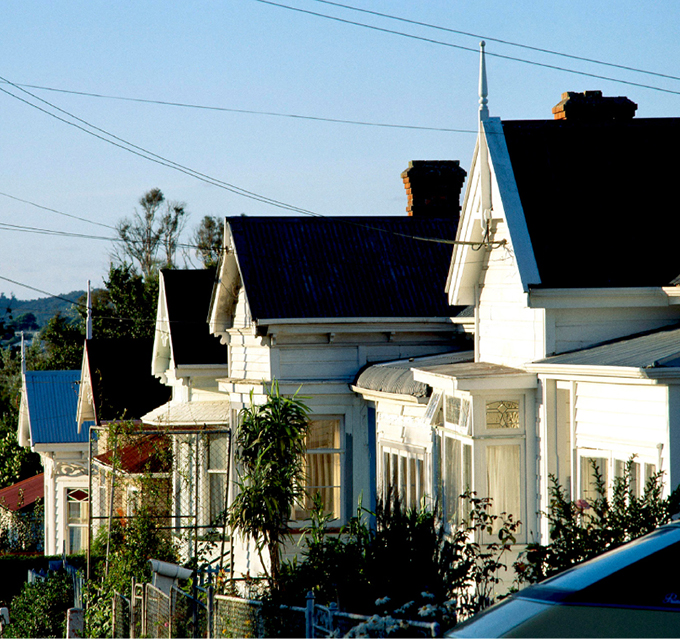
ANALYSIS: By Professor Ian Shirley
New Zealand’s 2016 budget offered Auckland nothing in the way of vision or hope and it continued the National government’s threats against the Auckland Council. Threatening the council with over-riding its democratic processes if it fails to release land for housing is a bullying tactic aimed at diverting attention away from the fundamental problems with housing in the region.
Even the Minister of Social Housing recognised the fact that this was going to be a “hopeless” budget for Auckland which explains why she rushed out her own mini budget on the eve of the non-event to demonstrate that at least one member of the government was aware that Auckland had a major housing crisis.

As the major population centre for New Zealand and the country’s portal to the global economy, Auckland matters! Over half of New Zealand’s population lives within a 200 km radius of Auckland and it is this size and population density that enables the region to provide business with economies of scale in production, marketing and sales.
More than any other factor it is the population base that defines the character and potential of Auckland. Apart from small and belated adjustments to the tax system for small business entities there were few policies in the budget to generate hope among the business sectors of Auckland.
Beyond business there was a virtual drought of initiatives that demonstrated government barely recognised, let alone valued, the working people of the region or its future generations.
Social deficit
The mini budget delivered by the Minister of Social Housing targets one aspect of the region’s social infrastructure. It fails, as the budget itself fails, to deal with a region containing one-third of New Zealand’s population including local board areas within Auckland that are larger than most provincial cities and regions.
As we highlighted in a recent report on the governance of Auckland, the social deficit has become a major concern for the region. It is deficit characterised by widening disparities of income and wealth, distinctions between “work rich” and “work poor” households, and increasing numbers of families and households living with the stress of insufficient money for basic necessities and limited access to affordable housing.
The challenges faced by different populations and groups in Auckland is graphically illustrated by the Pacific Island communities of the region who have few accumulated assets, limited employment opportunities relative to other population groups, and because of difficulties in acquiring affordable housing they are increasingly reliant on rental accommodation.
Pacific people came to this country with high expectations for themselves and their children. The adult members of these Pacific families played a significant role in the New Zealand economy during the 1960s and 1970s and they continue to make a contribution to many aspects of New Zealand life today from sport to fashion, from the creative industries to engagement in the tourism and service sectors.
Yet the age structure of Pacific populations means that they face additional challenges with nearly half of Pacific people being under 20 years of age. In Auckland, nearly 25 percent of children under the age of 10 live in Pacific households and 40 percent of those are living in Manukau.
Socially bankrupt
These were the families singled out by Minister Bennett as the families who might benefit from her $5000 subsidy aimed at encouraging them to leave Auckland – a socially bankrupt policy that would take households away from their family and friendship networks and from the support systems they have established in Auckland.
When you move from the social deficit facing Auckland to the state of the region’s physical infrastructure and utilities then we are confronted by a history of neglect. Central governments over several decades lacked any long-term spatial vision leaving the region with a major infrastructure liability and a transport shambles.
On top of these legacies, Auckland has recently had to accept the additional costs of migration and tourism with inadequate funding, a deteriorating housing and accommodation stock and totally inadequate compensation.
To make matters worse the deficit that has been incurred by Auckland’s physical infrastructure and utilities has been exploited by moneylenders and dealers speculating in land and housing and locking a generation of young families out of the housing market.
Where were the policies in this year’s budget aimed at controlling the unbridled power of capital and greed controlling land and housing in Auckland? Where was the commitment from central government to playing its part in addressing the regional deficits in both the physical and social infrastructures?
Where was the vision capable of matching the late Dove-Meyer Robinson who sought to build a rapid rail system in Auckland only to have his aspirations neutralised by central government? Where was the enthusiasm and support for Auckland council’s objective to build “the world’s most liveable city”? What Auckland got from the budget and in subsequent statements from Cabinet Ministers was threats to over-ride the regional government based on a flawed argument with no substance, no evidence and no credibility.
Auckland deserves a more considered response and that means a comprehensive range of policies that address the needs and aspirations of the region rather than a negative party strategy based on pork barrel politics. A desire to work in collaboration with the Auckland Council was sadly missing from last week’s budget.
Professor Ian Shirley is director of the Policy Observatory of Auckland University of Technology. This analysis was first published by the Policy Observatory and is republished by Asia Pacific Report with permission of the author.






































